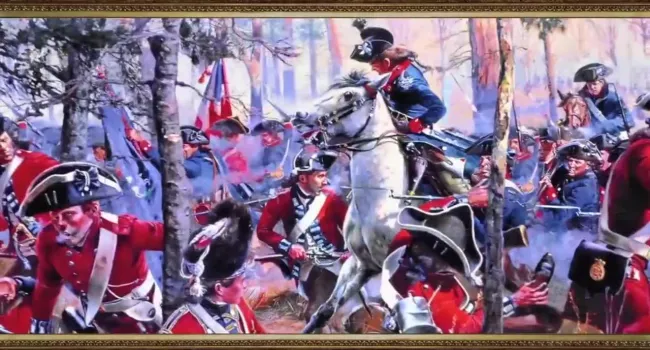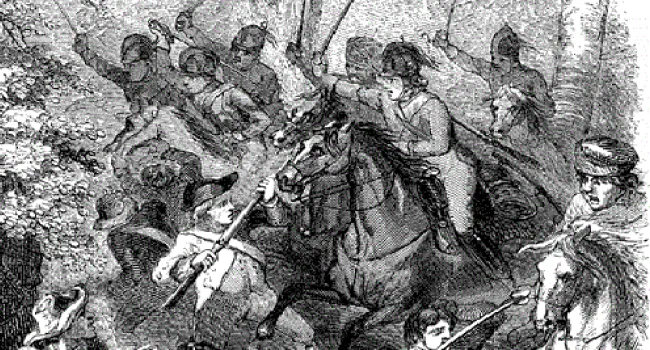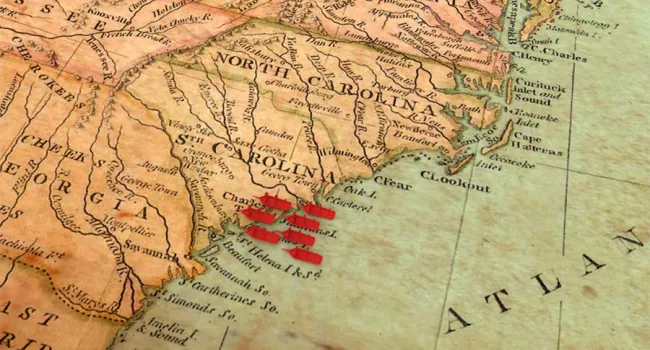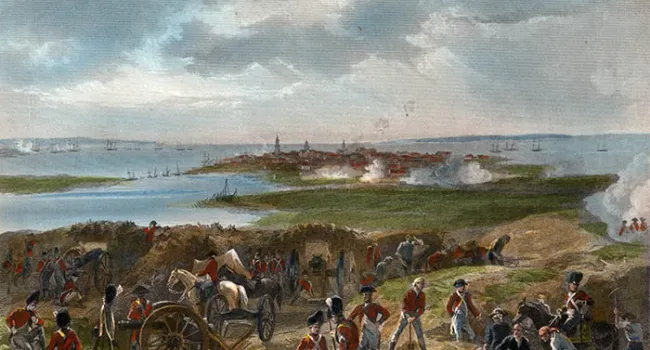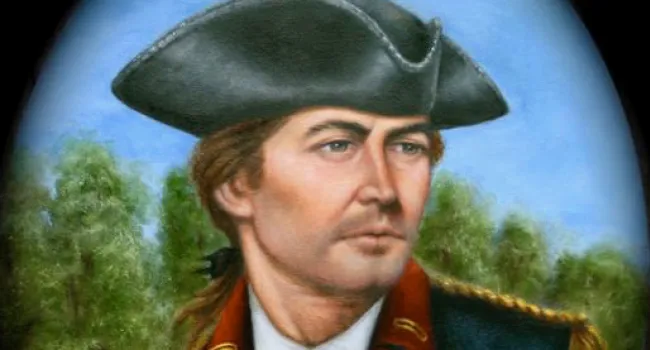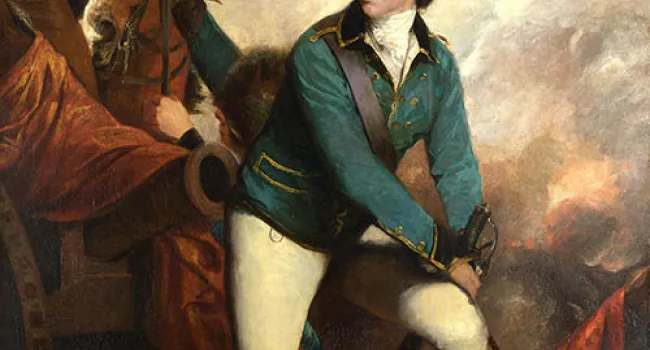The War for American independence began well for patriots in the South. In the city of Charles Town, South Carolina (known as “Charleston” after the war)—an unfinished palmetto fort remarkably withstood the cannon balls of the British fleet in 1776. Men like William Moultrie, Francis Marion, William Jasper, and others became Revolutionary War heroes.
Four years later—the American Revolution was deadlocked. In the North, battles were won and lost with little effect. General Henry Clinton and the British high command decided what they needed was a “Southern strategy.”
Colonel Abraham Buford was leading a regiment of Continental soldiers from Virginia to South Carolina to help defend Charleston. A group of soldiers coming from Charleston met them on the road and told them Charleston had already fallen into the British hands. Col. Buford decided to turn the men back towards North Carolina to keep the British from advancing into South Carolina.
On May 29, 1780, Lieutenant Colonel Banastre Tarleton and the British Legion caught up with Col. Buford’s army at a place called “The Waxhaws” in the Catawba River valley, located four miles south of the North Carolina border. Over in fifteen minutes and with 113 Americans dead on the field, this massacre became the first major battle of the Southern Campaign.
The Battle of Waxhaws was a turning point in the Revolutionary War, but not for reasons the British might have hoped. Their intent was to make the backcountry colonists feel the “heel of the boot.” But instead of disheartening the opposition, “Buford’s Massacre” rallied patriot support. Many patriots who had previously surrendered rejoined the fight, determined to repay the harshness of “Tarleton’s quarter” with a vengeance of their own.
Standards
- 4-3 The student will demonstrate an understanding of the conflict between the American colonies and England.
- 8-2 The student will demonstrate an understanding of the causes of the American Revolution and the beginnings of the new nation, with an emphasis on South Carolina’s role in the development of that nation.
Resources
You need to be logged in to listen to view this content. Create an account now; it's quick, easy, and free!
Log In to ViewWaxhaws: Sangre en el Campo| La Campaña Del Sur
La Guerra por la independencia estadounidense comenzó bien para los patriotas del Sur. En la ciudad de Charles Town, Carolina del Sur (conocida como "Charleston" después de la guerra), una fuerte de palmera inacabada resistió notablemente las bolas de cañón de la flota británica en 1776. Hombres como William Moltrie, Francis Marion, William Jasper, y otros se convirtieron en héroes de la Guerra Revolucionaria.
Cuatro años más tarde, la Revolución Americana estaba estancada. En el Norte, las batallas fueron ganadas y perdidas con poco efecto. El general Henry Clinton y el alto mando británico decidieron que lo que necesitaban era una "estrategia sureña".
Colonel Abraham Buford was leading a regiment of Continental soldiers from Virginia to South Carolina to help defend Charleston. A group of soldiers coming from Charleston met them on the road and told them Charleston had already fallen into the British hands. Col. Buford decided to turn the men back towards North Carolina to keep the British from advancing into South Carolina.
El 29 de mayo de 1780, el Teniente Coronel Banastre Tarleton y la Legión Británica se hicieron con el ejército del coronel Buford en un lugar llamado "las Waxhaws" en el valle del río Catawba, ubicado a cuatro millas al sur de la frontera con Carolina del Norte. En quince minutos y con 113 estadounidenses muertos en el campo, esta masacre se convirtió en la primera gran batalla de la Campaña del Sur.
La batalla de Waxhaws fue un punto de inflexión en la Guerra Revolucionaria, pero no por razones que los británicos podrían haber esperado. Su intención era hacer que los colonos del campo sintieran el "talón de la bota". Pero en lugar de descorazonar a la oposición, la “Masacre de Buford” reunió el apoyo de los patriotas. Muchos patriotas que antes se habían rendido se volvieron a unir a la lucha, decididos a pagar la dureza del "cuartel de Tarleton" con una venganza propia.
